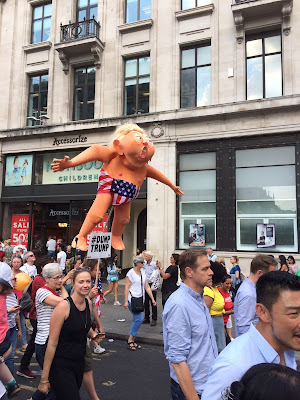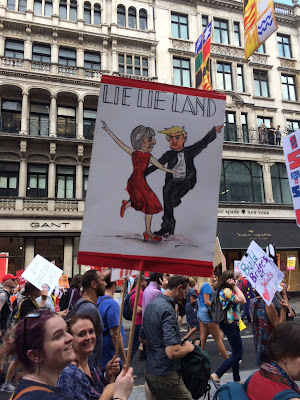The Specials classic 'Ghost Town' single was released in June 1981. In the same month the band played an anti-racist gig in their home city of Coventry in a period of murderous racist attacks by far right-affiliated skinheads.
This report is from 'The Leveller' magazine, 26 June 1981, written by Chris Schüller with accompanying photos by Alastair Indge:
'The Precinct is a large modern shopping centre in the middle of Coventry, a warren of split level consumerism, fountains, pubs, car parks and lightbites. Last Saturday morning it was business as usual, thousands of shoppers, bored kids milling around, a number of skinheads. The only unusual things about it were the number of police on patrol in pairs and stationed in vans near every main entrance. And the fact that, for a city with an Asian population of 22,000, there are remarkably few to be seen.
Two months ago, Satnam Singh Gill, a student at Henley College, was beaten, kicked and stabbed to death by a group of skinheads in broad daylight within 50 yards of the Precinct. It wasn’t the first racist attack to take place in Coventry. Just two weeks earlier, 17 year old Susan Cheema was minding her father;s grocery shop when she was attacked about the face, arms and hands with a scythe, losing one of her fingers. But it was the worst so far, focusing attention on the growing racial violence in the city, and prompting local Asian groups to organise anti racist campaigns and set up self defence groups [...]
The day after Satnam Singh Gill died, a meeting was called by Asian and West Indian community leaders. Attended by over 400 people, it’s set up the Coventry Committee against Racism, a broad based organisation to which 37 community associations, temples and political groups are associated. They range from the Supreme Council of Sikhs through to the Communist Party to the Anglo-Asian Conservative Association. On May 23, they held a march to the city centre to protest at the death of Satnam Singh Gill. As the 10,000 strong procession reached Broadgate, a large group of ‘seig heiling’ skinheads began to hurl missiles and abuse from behind the police lines. As the young Asian marchers attempted to retaliate, some of them shouting, 'Brixton! Brixton!', 74 arrests were made. Many felt that the arrests were made far from impartially, and that the police had acted in defence of the right-wingers [...]
May 23 also provided the first concrete evidence that racist activity in Coventry was being coordinated by fascist organisations. Rumours had circulated before that the British Movement had moved some members into Coventry in January, that on May 9, four or five members of the BM and New National Front were seen in the city centre, but on May 23, hundreds of unorganised skinheads who had gathered to abuse and attack the marchers were met by Robert Relf and Leicester BM organiser Ray Hill [...]
Despairing of fair treatment and protection from the police, many members of the Asian community are organising their own defence. Harjinder Sehmi told me that his temple are providing judo and karate classes. 'We’re not out to revenge anything' he says, 'just out to defend ourselves'. Some of the more militant groups and individuals in the Coventry Committee against Racism have formed the Committee for Anti-racist Defence Squads under the umbrella of the larger organisation.
Meanwhile the attacks have intensified. On May 17, arson attempts took place at the Krishna temple and the Indian and Commonwealth Club. A woman of 50 was stabbed by skinheads while out shopping; a bus driver was attacked with a broken bottle, and another, who attempted to defend himself again skinheads was charged with actual bodily harm and with carrying an offensive weapon [...] At the Coventry Carnival on May 13, the carnival queen, a West Indian, had to ride in a closed car because of stoning threats, and when a group of West Indian youths intervened to help an Asian boy who was being roughed up by skinheads, the police chased them off […]
Then on June 7, Dr Amal Dharry was stabbed in the heart by a 17-year-old skinhead as he left the chip shop in Earlsdon. He staggered to his car, where he locked himself in before collapsing. He died in hospital after 10 days on a life support machine. His attacker gave him self up immediately. He’d done it for a £15 bet that you wouldn’t “get a p*ki that night”.
It was against this background of racist violence that the Coventry-based two tone group The Specials decided to hold a festival for racial harmony in the Butts Stadium last Saturday. They asked other popular Coventry bands to perform for free – and put up the £13,000 it cost to put on the festival. The profits were to go to local anti racist groups [...]
On the day, barely 1000 people turned up. Perhaps they were scared away by rumours of trouble, perhaps they found the £3.50 entrance fee too expensive [...] Things livened up when The Specials came on. They seemed to turn the tension and frustration and disappointment into musical energy, and the small passive crowd suddenly became a big, excited one, and the songs never sounded so urgent, so relevant. But perhaps the high point of the whole set was a guest appearance by Rhoda Dakar who used to be with the Bodysnatchers. 'This is a song about another kind of violence, sexual violence'. It was called The Boiler and was about rape'.
[Hazel O'Connor also played at the festival. A few weeks later riots swept the country - see previous posts on the 1981 Summer Uprisings]
See also:





















































